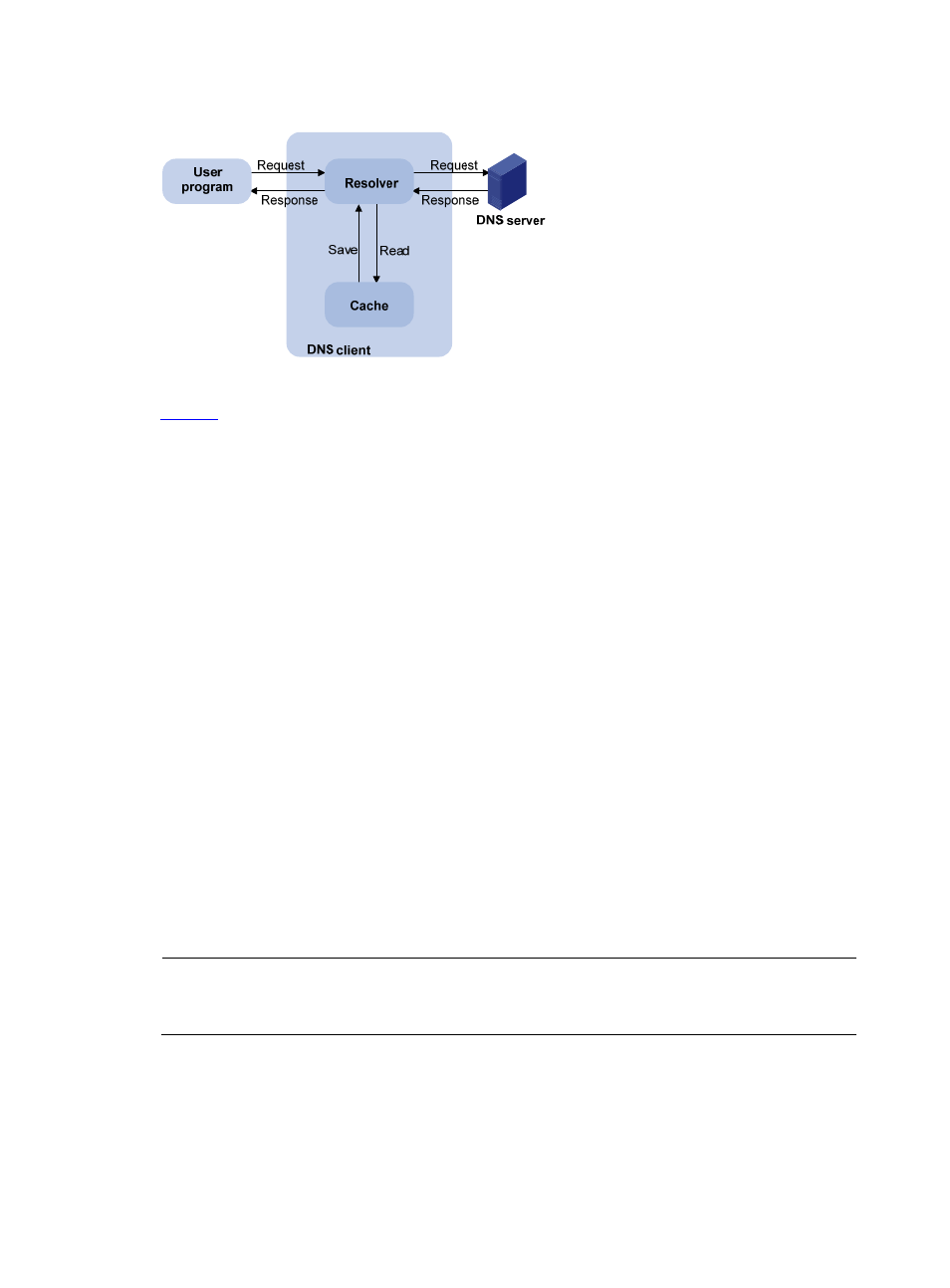Dns suffixes, Dns proxy, Introduction to dns proxy – H3C Technologies H3C SecPath F1000-E User Manual
Page 259

2
Figure 1 Dynamic domain name resolution
shows the relationship between the user program, DNS client, and DNS server. The resolver
and cache comprise the DNS client. The user program and DNS client can run on the same device or
different devices, while the DNS server and the DNS client usually run on different devices.
Dynamic domain name resolution allows the DNS client to store latest mappings between domain
names and IP addresses in the dynamic domain name cache. There is no need to send a request to the
DNS server for a repeated query next time. The mappings are removed from the cache after some time
to ensure latest entries are obtained from the DNS server. The DNS server decides how long a mapping
is valid, and the DNS client gets the aging time from DNS messages.
DNS suffixes
The DNS client normally holds a list of suffixes which can be defined by users. It is used when the name
to be resolved is incomplete. The resolver can supply the missing part. For example, a user can
configure com as the suffix for aabbcc.com. After that, the user only needs to type aabbcc, and the
resolver will add the suffix and delimiter. The following describes more details.
•
If there is no dot in the inputted domain name (for example, aabbcc), the resolver will consider it a
host name and add a DNS suffix before query. If no match is found after all the configured suffixes
are used respectively, the original domain name (for example, aabbcc) is used for query.
•
If there is a dot in the inputted domain name (for example, www.aabbcc), the resolver will directly
use this domain name for query. If the query fails, the resolver adds a DNS suffix for another
query.
•
If the dot is at the end of the domain name (for example, aabbcc.com.), the resolver will consider
it a fully qualified domain name (FQDN) and return the query result, successful or failed. Hence,
the dot (.) at the end of the domain name is called the terminating symbol.
Currently, the device supports static and dynamic DNS services.
NOTE:
If an alias is configured for a domain name on the DNS server, the device can resolve the alias into the IP
address of the host.
DNS Proxy
Introduction to DNS proxy
A DNS proxy forwards DNS requests and replies between DNS clients and a DNS server.
